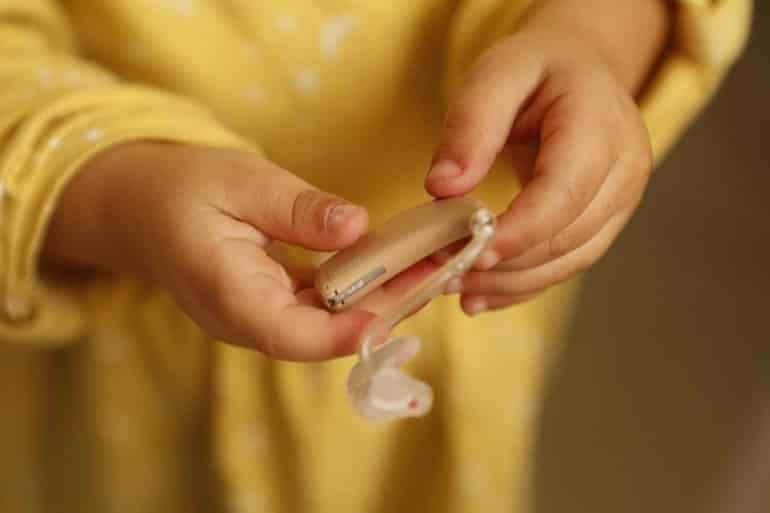Summary: Researchers identified three different MINAR2 genetic mutations that were responsible for deafness in 13 people from four different families.
Source: University of Miami
Researchers at the John T. Macdonald Department of Human Genetics and John P. Hussman Institute for Human Genomics at the University of Miami Miller School of Medicine have found that inherited mutations in the MINAR2 gene caused deafness in four families.
The gene variation mostly affects the inner ear hair cells, which are critical to hearing.
The authors believe the progressive nature of this hearing loss, in some affected individuals and in mice, could offer opportunities for treatment.
The study was published on June 21 in the journal PNAS.
“MINAR2 plays a major role in hearing, and these inherited mutations lead to sensorineural deafness,” said Mustafa Tekin, M.D., a professor in the Dr. John T. Macdonald Foundation Department of Human Genetics and senior author on the paper.
“The findings suggest these cases may be suitable for intervention with genetic therapies.”
Dr. Tekin has been studying the genetic underpinnings behind hearing loss for more than 20 years and has amassed a biorepository with genomic sequencing database of deafness-associated gene mutations in families all over the world.
“We first look at known genes mutations,” said Dr. Tekin. “If we don’t find any, we conduct whole genome sequencing to potentially identify new genes or something we may have missed in the initial test.”
In this study, the team sequenced a Turkish family’s genome, targeting known deafness genes, but found nothing. Following up with whole genome sequencing, they found DNA variants in MINAR2, which had only recently been described in the research literature. Scientists are still filling in the blanks on the gene’s function.
Having identified the variations in MINAR2 in one family, Dr. Tekin’s team searched their database and found a second family with a different mutation in the same gene.

Further investigation confirmed their findings in animal studies and identified three different MINAR2 mutations, which caused deafness in 13 people from four families.
“We found this gene serves an important function,” said Dr. Tekin. “The protein localizes in hair cells and other areas that are critical to hearing. Future research will focus on clarifying the gene’s role.”
Hair cells convert sound into electrical signals, which are then sent to the brain. Normally, when children are born deaf, they have few if any living hair cells. As a result, gene therapies and other regenerative efforts would likely fail.
However, in the mouse knockout model of MINAR2, hair cells remain alive until a later age. This gradual loss of hearing could allow for treatment.
“What is surprising and promising for potential intervention is that, when we looked at the hair cells in our mouse model, they are alive until a certain age,” said Tekin. “That gives us a window of opportunity to provide treatment. We could insert the normal gene and potentially restore hearing.”
About this genetics and deafness research news
Author: Kai Hill
Source: University of Miami
Contact: Kai Hill – University of Miami
Image: The image is in the public domain
Original Research: Open access.
“Mutations in MINAR2 encoding membrane integral NOTCH2-associated receptor 2 cause deafness in humans and mice” by Mustafa Tekin et al. PNAS
Abstract
Mutations in MINAR2 encoding membrane integral NOTCH2-associated receptor 2 cause deafness in humans and mice
Discovery of deafness genes and elucidating their functions have substantially contributed to our understanding of hearing physiology and its pathologies.
Here we report on DNA variants in MINAR2, encoding membrane integral NOTCH2-associated receptor 2, in four families underlying autosomal recessive nonsyndromic deafness. Neurologic evaluation of affected individuals at ages ranging from 4 to 80 y old does not show additional abnormalities. MINAR2 is a recently annotated gene with limited functional understanding.
We detected three MINAR2 variants, c.144G > A (p.Trp48*), c.412_419delCGGTTTTG (p.Arg138Valfs*10), and c.393G > T, in 13 individuals with congenital- or prelingual-onset severe-to-profound sensorineural hearing loss (HL). The c.393G > T variant is shown to disrupt a splice donor site. We show that Minar2 is expressed in the mouse inner ear, with the protein localizing mainly in the hair cells, spiral ganglia, the spiral limbus, and the stria vascularis.
Mice with loss of function of the Minar2 protein (Minar2tm1b/tm1b) present with rapidly progressive sensorineural HL associated with a reduction in outer hair cell stereocilia in the shortest row and degeneration of hair cells at a later age.
We conclude that MINAR2 is essential for hearing in humans and mice and its disruption leads to sensorineural HL.
Progressive HL observed in mice and in some affected individuals and as well as relative preservation of hair cells provides an opportunity to interfere with HL using genetic therapies.






